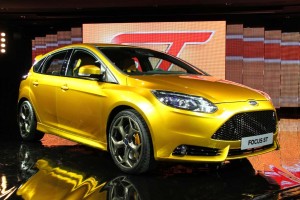Among the numerous features Ford Motor Co. will offer on its new 2012 Focus model will be something called torque vectoring control, a system designed to help power the car through corners.
The new system is designed to shift torque to the outer wheel as the Focus goes into a turn, both maximizing grip and improving performance.
Ford becomes the first automaker in the compact segment to offer torque vectoring, notes Focus program manager Rick Bolt. “Because torque vectoring control is on all our Focus models, it will elevate skill sets across a broad range of drivers,” he contends.
But Ford is just the latest on a growing list of manufacturers offering torque vectoring technology. Other makers that have adopted the concept include Audi, Acura and Subaru. The concept goes a giant leap beyond the time-tested limited-slip differential offered by most modern automakers. And with all-wheel-drive models can help overcome a tendency to push through corners.
The underlying idea is to provide more power to the outer wheel while a vehicle goes into a corner. That added torque actually assists in steering through the turn. Some critics don’t like conventional all-wheel-drive powertrains because they tend to resist turning.
The 2012 Ford Focus is a front-drive model and uses a relatively simple torque-vectoring system that relies on subtle brake intervention to shift torque between the left and right wheels. The system is operated by the same computer controller that regulates the vehicle’s anti-lock brakes, traction and stability control systems.
More complex torque vectoring technologies, like those in use by Audi, rely on a more complex, electronically-controlled gearing system to shift power from left to right. With a four- or all-wheel-drive vehicle, power is also moved from front to rear, as needed.
The disadvantage of the simpler brake-based system is that it can lead to premature brake wear if the vehicle is regularly driven aggressively.
But the trade-off is cost, and it permits Ford to offer torque vectoring on a model in the compact segment, like Focus. Ford is adopting a variation of the technology on other models. Dubbed Corner Control, it uses the same basic vehicle sensors and electronic brain to sense when a vehicle is entering a turn too fast. In such a situation, Corner Control is designed to scrub off as much as 10 mph in just a second, and then help the driver regain control.

